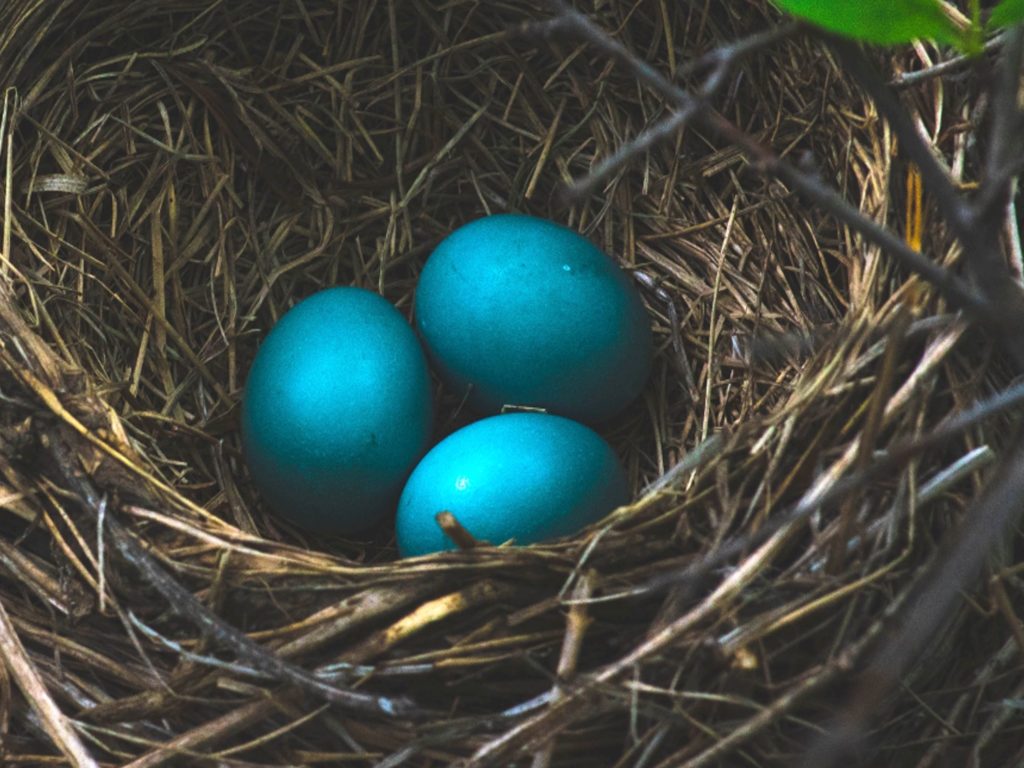What were ancient beliefs about the moon? What possible difference could the moon make to your life? Other than the tides, the moon doesn’t have much effect on earth, does it?
In fact, the moon wields a tremendous effect on every living thing on earth, including you, whether you’re aware of it or not. From your physical stamina to your emotional well-being, the moon’s presence has an impact. The ancients knew this and twenty-first century science is proving what the ancients knew. There is no longer any denying that the moon’s power alters life on earth.
When you are not aware of the moon’s effects, you can be at the mercy of your emotions, overreacting to things, experiencing debilitating highs and lows, suffering life on a roller-coaster. Once you understand the moon’s effect on your life, you can take steps to align with its phases so you remain calm, focused, and able to refresh and rejuvenate yourself.
If you’re on a self-healing or spiritual path, or just want to better understand how the world works, it makes sense to learn about the moon. For this reason, we’ll talk about the moon in five parts, each presenting a different perspective.
Part 1 – Ancient Beliefs about the Moon
Part 2 – Discoveries About the Moon
Part 3 – How Does the Moon Affect the Earth?
Part 4 – Subtle Energy Fields
Part 5 – Healing With the Moon
Were the ancients were on to something?
What did the ancients know about the moon that can help you in your life today? Ancient wisdom was based on observation of the cycles of the natural world over countless generations. From the beginning of human history, the moon has acted as a cultural mirror reflecting people’s beliefs and ways of seeing life.
Throughout time, the moon has been interpreted in many ways: as a god, a planet, a timekeeper, and a calendar, to name just a few manifestations. The moon was usually seen as a feminine symbol, but not always.
It is surprising to learn how much agreement there was about the moon in ancient times amongst different civilizations who never knew that the others existed. Civilizations as diverse as Hindu Yogis in India, the Toltec in Mesoamerica, and Native American tribes in North America shared the belief that the moon represented the foundation for how to live a harmonious life.
One aspect of the moon that was universally recognized was that the moon represented the rhythm of time because it embodied the idea of a cycle.

Every twenty-eight days, like clockwork, the moon went from black and invisible at the new moon, to a glowing white ball at the full moon, then back to darkness at the new moon. During these phases, the ancients observed regularly occurring patterns in both nature and humans. For example, they saw what happened to plants, animals, and humans at the new and full moons, and understood the energetic differences between these times of the moon’s cycle.
They observed that during the two weeks from the new moon to the full moon (the waxing phase), the stems and leaves of plants grew. But during the two weeks from the full moon to the new moon (the waning phase), the roots of plants grew, not the leaves and stems.

They understood this to mean that living in harmony with the moon’s rhythm meant balancing outward and inward growth, balancing the conscious and subconscious selves. They emphasized taking time to be in the world (above ground, one’s conscious) and taking time to explore one’s hidden side (below ground, subconscious).
Does the moon affect the body?
Yes. Our bodies are 60% water and science has shown that water expands and contracts in relation to the gravitational pull of the moon (which explains why you may feel bloated at full moons and dehydrated at new moons). And the moon exerts an even more subtle influence on our bodies in ways that are not so obvious.
On an energetic level, our ancestors knew that the moon’s effects, and our subtle body’s responses to it, were real and not to be ignored. You have a subtle body, whether you’re aware of it or not, and it rules your emotions, thoughts, and behaviors. As science has proven, your subtle body is connected to the earth’s magnetic field and the magnetic fields of all living beings.
The ancients were attuned to their own subtle bodies and the magnetic fields in which they lived. They knew that harmony with the moon created emotional happiness which produced a positive state of health. Disharmony with the moon created disturbances in the emotions and the mind, which produced body imbalances such as psychosomatic illnesses.
They aligned themselves, their activities, and their focus according to the moon’s fluctuations. In this way, they harnessed the moon’s waxing and waning energies for everyone’s benefit. To support their efforts, ancient traditions all over the world created rituals and societal norms in relation to the moon that kept their populations healthy and thriving.
What do the moon’s phases represent?
Moon phases symbolize both the dark side of nature and enlightenment. In a human life, we are confronted by both aspects within ourselves, darkness and light. In many ancient cosmologies, the sun represented the conscious mind, the part of ourselves that we can see and use to navigate the world. The moon represented the subconscious mind, that part of ourselves below the surface that we cannot access directly yet which plays an important role in the direction of our lives.
We should probably not forget that the word lunacy derives from the Latin lunaticus, meaning “moonstruck,” and both the Greek philosopher Aristotle and the Roman naturalist Pliny the Elder believed that madness and epilepsy were caused by the moon. While they may not have understood why this is the case, as you will see in Part 2 – What Science Has Proven they were not wrong in linking the moon with human behavior.
Ancients also used the phases of the moon to represent stages of development of every living thing. The new moon is a black circle in the sky which represents infancy. The waxing moon phase shows an ever-expanding crescent, which represents youth. The full moon is a glowing reflective circle, which represents the completion of growth or adulthood. And the waning moon phase shows an ever-decreasing crescent, which represents the wisdom of the golden years.
How do the moon’s phases play out in your life?
One way to think about the moon is that every twenty-eight days, on the new moon, you have a new beginning, an opportunity to experience the power of the waxing and waning phases to realize your vision. The ancients recommended planting seeds, physically and metaphorically, at the new moon for what you wanted to see come to fruition at the full moon. Then nurture the seeds during the waxing and waning phases such that you create a sturdy plant with solid roots to build on.
Most ancient teachings agreed about what to do during new moons and full moons, knowledge that we have lost and certainly don’t put into practice, which leads to some regrettable consequences. For example, ancient cultures agreed that the new moon is a time to replenish, not surge ahead. During new moons, people have less energy. Doing too much activity during a new moon will deplete stamina.
If you bring this advice to the present, a common mistake we all make in our hyperactive culture is to do the same amount of work or push ourselves too hard, regardless of the phase of the moon. Some times of the month we feel energized (often around the full moon) and other times we feel depleted (often around the new moon), but we tend to follow the constant drumbeat of work and wonder why sometimes we just don’t have the energy or we feel poorly. So one thing we can do around the new moon is to slow down, avoid stressful activities, and sleep longer if possible. It is also beneficial to address unprocessed emotions and life situations during new moon times.
The ancients noticed more babies being born and eggs hatching around the time of the full moon, giving birth to new generations.

Unfortunately, this includes the eggs of detrimental micro-organisms such as parasites, viruses and bacteria. These invaders take advantage of the full moon boost to thrive. This is why, in many ancient cultures, people fasted on the full moon as an important cleansing process to maintain the balance of what is now known as their biome and other micro-organisms.
The full moon was also known by the ancients to be a magnifying glass, inflating emotions and aggravating symptoms. Knowing that the full moon brings maturity and fulfillment to everything, including our thoughts and subconscious wishes, the ancients were vigilant and very present in their thoughts and actions. During full moons they focused on clearing their energy and space. Ancient cultures treated the full moon as a time of spiritual activity and cleansing.
Were the ancients right?
The idea that the lunar cycle can influence people’s emotions and behavior dates back thousands of years. Unfortunately, the rise of Western science and medicine over the last two centuries had dismissed this knowledge. But now, thanks to twenty-first century technology, researchers from a variety of scientific disciplines have been uncovering data that confirms what the ancients knew. For example, a recent The Scientist Magazine article on new research suggests there may be some truth to these ancient theories after all. Why Talk About the Moon Part 2 – What Science Has Proven examines the truth about the moon that has been uncovered by scientific research, and reveals scientific evidence that may astound you.
The ancients were indeed right about the moon.
Resources
Read more about scientific discoveries regarding the moon and life on earth:
* The Scientist Magazine article Can Humans Sense Magnetic Fields as quoted by the BBC.
* The Smithsonian Magazine article Some People’s Brains Can Sense Earth’s Magnetic Field.
* The Guardian Newspaper article The sixth sense: can humans detect the Earth’s magnetic field?
Learn about the importance of the moon in the Chaco Culture of what is now New Mexico in The Mystery of Chaco Canyon, available for purchase and streaming on Amazon Prime. As you watch the documentary, you might consider the sites as communal spiritual centers and the kivas as places for inward journeys of initiates.
Learn how you can heal yourself with the moon by reading the entire Powers of the Moon Series:
Part 1 – Ancient Beliefs About the Moon
Part 2 – Discoveries About the Moon
Part 3 – How Does the Moon Affect the Earth?
Part 4 – Subtle Energy Fields
Part 5 – Healing With the Moon
To learn more about the moon’s influence and what you can do to live in alignment with the moon’s natural rhythm, watch the six lessons in the 28-Day Moon Meditation Essential Program. If you want a short (15-minute) daily practice designed around the phases of the moon, check out the daily practice videos for this program.
Learn more about healing and consciousness at Inner Treasure Hunt. If you liked this post, you can subscribe to the Inner Treasure Hunt newsletter to stay informed about new posts, programs, and events.
Please share this post with your friends! Just click below.
Ancient Beliefs About the Moon – Powers of the Moon Series – Part 1 of 5
Discoveries About the Moon – Powers of the Moon Series – Part 2 of 5
How Does the Moon Affect the Earth? – Powers of the Moon Series – Part 3 of 5
Subtle Energy Fields – Powers of the Moon Series – Part 4 of 5
Healing With the Moon – Powers of the Moon Series – Part 5 of 5



